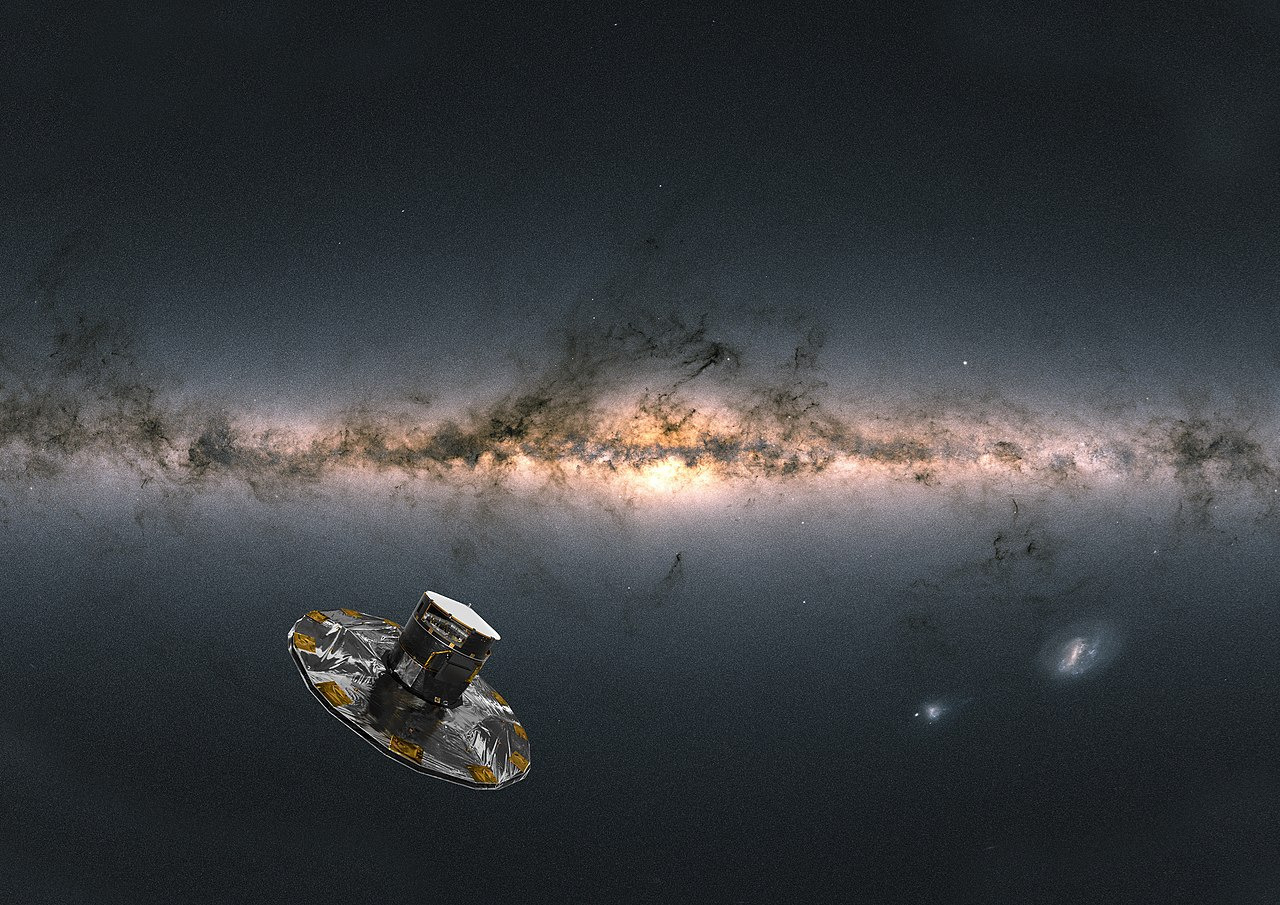(CLO) The European Space Agency's (ESA) Gaia spacecraft, after 12 years of dedication to mapping the Milky Way, officially ceased scientific operations on January 15.
The reason is that the cold gas fuel needed to maintain its self-regulating ability is running low. Since its launch in December 2013, Gaia has made more than 3 trillion observations with unprecedented precision, creating the largest and most accurate 3D map of the Milky Way and revealing a host of astronomical mysteries.
In more than a decade of operation, Gaia has collected data on nearly two billion objects in the universe, including binary stars, quasars, asteroids and exoplanets.

ESA's Gaia spacecraft observing the Milky Way. Photo: ESA
Thanks to the ASTRO astrometric system, Gaia can determine the positions and motions of stars with high precision, while the RVS radial velocity spectrometer measures their velocities along the line of sight.
The BP/RP photometer also plays an important role, providing color information that helps scientists determine the mass, temperature and chemical composition of stars.
Notable achievements from Gaia include precisely locating the orbits of more than 150,000 asteroids and discovering a new type of black hole only revealed through its gravitational influence on surrounding stars.
Although scientific operations have ended, the mass of data Gaia left behind continues to transform the field of astronomy. The fourth Gaia data release (GR4) is scheduled for 2026, and will include 500 terabytes of data from over 5.5 years of observations.
This is just half of the data Gaia has collected. The final release (GR5), scheduled for the late 2020s, will include all of the spacecraft’s 10.5 years of operations, providing an unprecedented treasure trove of information about the universe.
Gaia’s journey is not quite over. Over the next few weeks, scientists will conduct a series of technological tests to improve data calibration and aid in the design of future missions.
These tests are designed to further study Gaia's instruments and how they interact in the space environment. Once complete, Gaia will be moved into a heliocentric orbit in March or April 2025, ensuring it does not interfere with future spacecraft.
The Gaia mission is not only a crowning achievement for ESA, but also a symbol of progress in our understanding of the universe. From creating the most detailed map of the Milky Way to providing groundbreaking data on black holes and objects in the Solar System, Gaia has left a lasting scientific legacy.
Astronomers will continue to mine data from this mission for decades, opening new doors in space research.
Hoai Phuong (according to Space, Universe Today)
Source: https://www.congluan.vn/tau-vu-tru-ve-ban-do-dai-ngan-ha-ket-thuc-su-menh-sau-12-nam-post330785.html
































![[Photo] An Phu intersection project connecting Ho Chi Minh City-Long Thanh-Dau Giay expressway behind schedule](https://vstatic.vietnam.vn/vietnam/resource/IMAGE/2025/8/21/1ad80e9dd8944150bb72e6c49ecc7e08)































![[Photo] Politburo works with the Standing Committee of Hanoi Party Committee and Ho Chi Minh City Party Committee](https://vstatic.vietnam.vn/vietnam/resource/IMAGE/2025/8/21/4f3460337a6045e7847d50d38704355d)

































Comment (0)